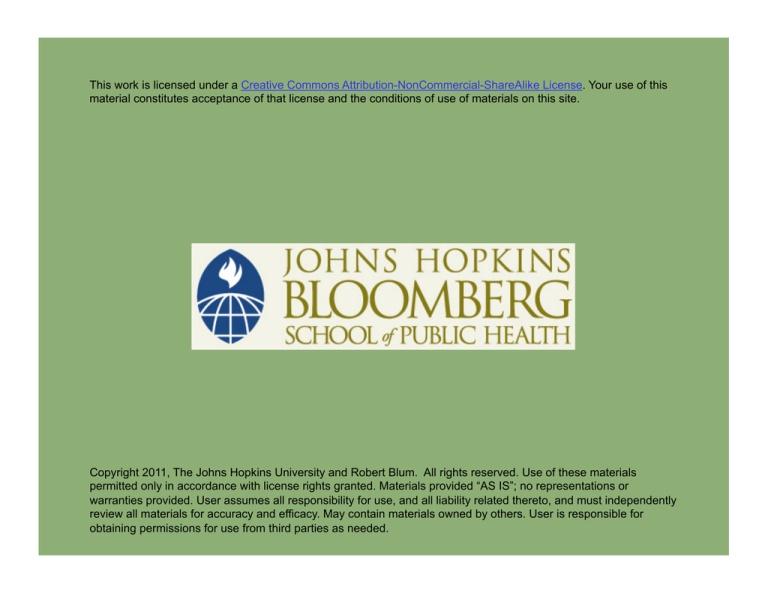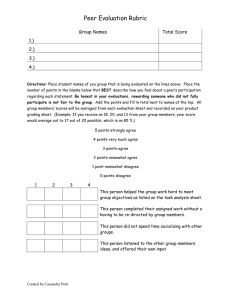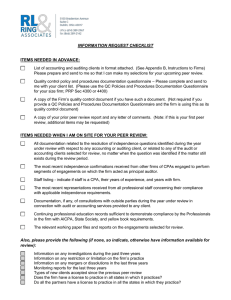
This work is licensed under a Creative Commons Attribution-NonCommercial-ShareAlike License. Your use of this
material constitutes acceptance of that license and the conditions of use of materials on this site.
Copyright 2011, The Johns Hopkins University and Robert Blum. All rights reserved. Use of these materials
permitted only in accordance with license rights granted. Materials provided “AS IS”; no representations or
warranties provided. User assumes all responsibility for use, and all liability related thereto, and must independently
review all materials for accuracy and efficacy. May contain materials owned by others. User is responsible for
obtaining permissions for use from third parties as needed.
Section B
Social and Psychological Theories of Risk Taking
Risk Perception
Adolescents are no worse than adults at estimating vulnerability to
risk (Renya and Farley, 2006)
3
Family Structure/Function Associated with Risk Taking
Single parent
Parental monitoring
Parental connectedness
Authoritative parenting style
4
The Biopsychosocial Model of Risk-Taking Behavior
Biological maturation
Cognitive
scope
Selfperceptions
Social & environmental
perceptions
Personal
values
Egocentrism
Future time
Perspective
Self-esteem
Body image
Identity
Parental & peer influence
Parental & peer control
Parental & peer support
Independence
achievement
Risk perceptions
Peer group characteristics
Costs or benefits
Optimistic bias
Controllability
Peer age
Peer values
Peer behavior
Risk-taking behavior
Source: Adapted from Irwin and Millstein. (1986).
5
Factors Contributing to the Onset of Risk Taking
Predisposing Endogenous Factors
Cognitive immaturity
Depression
Low self-esteem
Male gender
Genetic predisposition
Sensation seeking
Value on dependence
Asynchronous development
Hormonal effects
Normal effective states
Intact self-esteem
Value on achievement
Religiosity
Cognitive maturity
Precipitating Factors
Predisposing Exogenous Factors
Peer approval of risk
behaviors
Lack of parental supervision
School failure
Poverty
Parental involvement in risk
behaviors
Academic achievement
Intact family
Close supportive parental
relationships
Church attendance
Involvement in school
activities
Authoritative parenting
Source: Irwin and Ryan. (1989); Irwin and Millstein. (1986).
Peer initiation of
risk behaviors
Social pressure
School transition
Family disruption
Initiation of sexual
activity or
substance use
Vulnerability
Risk-taking behavior
6







